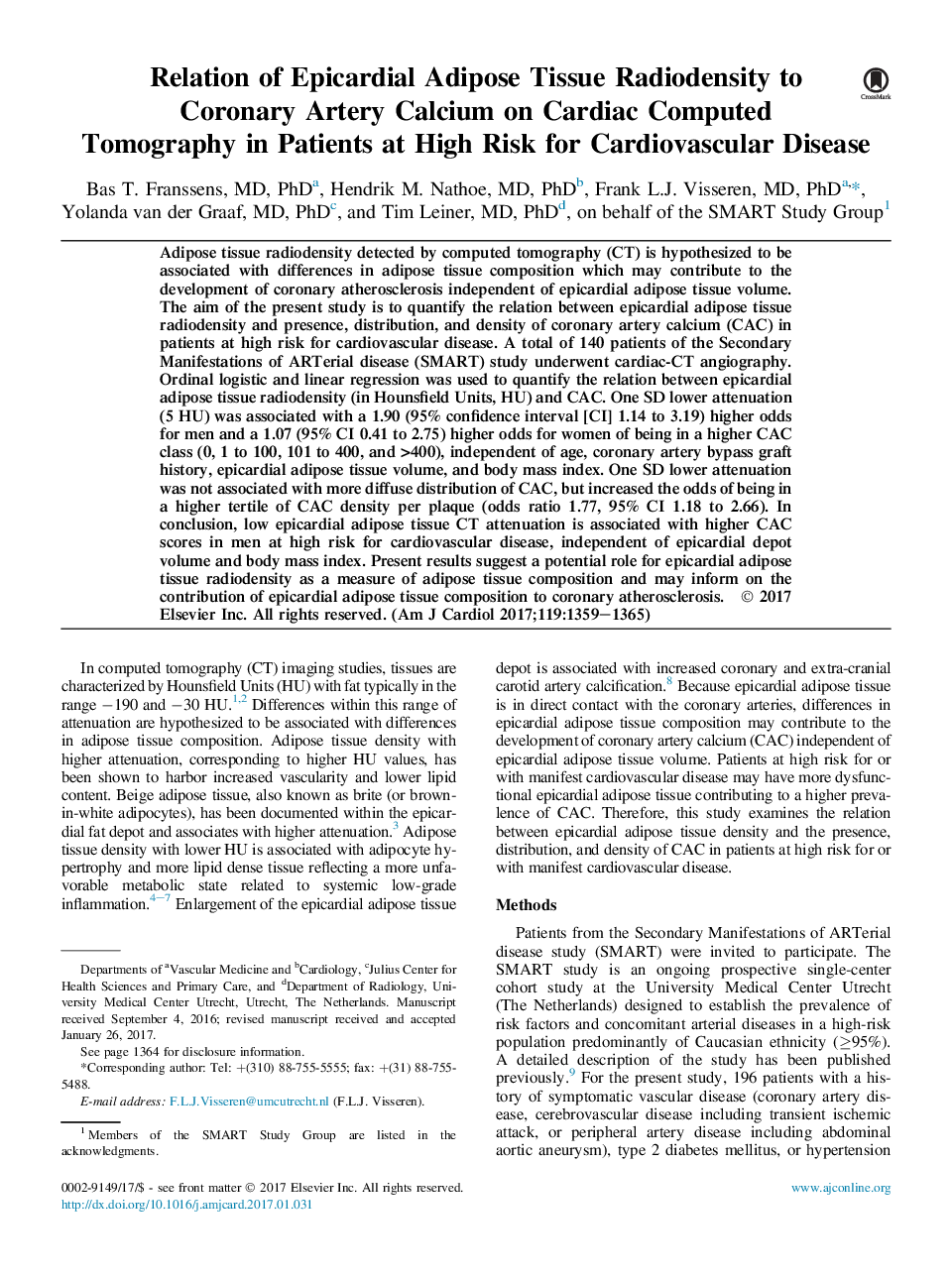| کد مقاله | کد نشریه | سال انتشار | مقاله انگلیسی | نسخه تمام متن |
|---|---|---|---|---|
| 5595613 | 1572088 | 2017 | 7 صفحه PDF | دانلود رایگان |
Adipose tissue radiodensity detected by computed tomography (CT) is hypothesized to be associated with differences in adipose tissue composition which may contribute to the development of coronary atherosclerosis independent of epicardial adipose tissue volume. The aim of the present study is to quantify the relation between epicardial adipose tissue radiodensity and presence, distribution, and density of coronary artery calcium (CAC) in patients at high risk for cardiovascular disease. A total of 140 patients of the Secondary Manifestations of ARTerial disease (SMART) study underwent cardiac-CT angiography. Ordinal logistic and linear regression was used to quantify the relation between epicardial adipose tissue radiodensity (in Hounsfield Units, HU) and CAC. One SD lower attenuation (5 HU) was associated with a 1.90 (95% confidence interval [CI] 1.14 to 3.19) higher odds for men and a 1.07 (95% CI 0.41 to 2.75) higher odds for women of being in a higher CAC class (0, 1 to 100, 101 to 400, and >400), independent of age, coronary artery bypass graft history, epicardial adipose tissue volume, and body mass index. One SD lower attenuation was not associated with more diffuse distribution of CAC, but increased the odds of being in a higher tertile of CAC density per plaque (odds ratio 1.77, 95% CI 1.18 to 2.66). In conclusion, low epicardial adipose tissue CT attenuation is associated with higher CAC scores in men at high risk for cardiovascular disease, independent of epicardial depot volume and body mass index. Present results suggest a potential role for epicardial adipose tissue radiodensity as a measure of adipose tissue composition and may inform on the contribution of epicardial adipose tissue composition to coronary atherosclerosis.
Journal: The American Journal of Cardiology - Volume 119, Issue 9, 1 May 2017, Pages 1359-1365
